Wit and Play in Classic Science Fiction: The Best of Fredric Brown
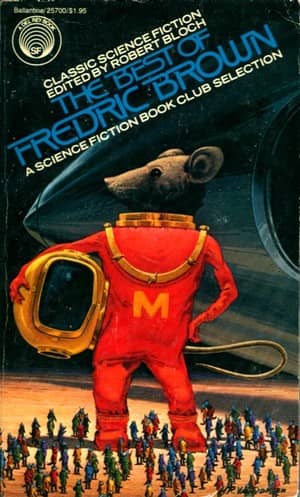 The Best of Fredric Brown (1977) was the tenth installment in Lester Del Rey’s Classic Science Fiction Series. The then living horror author Robert Bloch (1917–1994) gives the introduction. H. R. Van Dongen (1920–2010) returns to do his second cover in the series, having done the cover for the seventh volume in honor of John W. Campbell.
The Best of Fredric Brown (1977) was the tenth installment in Lester Del Rey’s Classic Science Fiction Series. The then living horror author Robert Bloch (1917–1994) gives the introduction. H. R. Van Dongen (1920–2010) returns to do his second cover in the series, having done the cover for the seventh volume in honor of John W. Campbell.
There is no afterword since, generally, the series seems to include an afterword by the author only if (fair enough) the author was living at the time. Since Fredric Brown had already died (1906–1972) by the time this book was published there is no afterword.
I first heard of Fredric Brown a few years ago here at Black Gate. Our own esteemed editor John O’Neill was reminiscing about this very book. As with so many of John’s Del Rey “Best of” posts, I was intrigued and tracked down a copy. I read through the book and enjoyed many of the stories.
But, my main memory of Brown was primarily one of annoyance.
At that time Brown struck me as an author who often tried to be too cute for his own good. My impression was not helped when I picked up his short novel Martians, Go Home (1954) a few months later. I enjoy a bit of humor in my fiction. But I guess I was not in the mood for something like Hitchhiker’s Guide to the Galaxy at the time.
I also found the twist endings of many of Brown’s short stories to be less than satisfying. So when I started to go through this series for reviews on Black Gate, I was not looking forward to returning to Fredric Brown.
But upon re-reading this volume, I surprisingly found that my prior annoyance had dissipated. What changed?
I am convinced that one’s reading is sometimes greatly affected by the context of one’s life. Perhaps the first time I read The Best of Fredric Brown I just was not in the mood to experience, what the book’s back cover calls, the “Wit and Whimsy of Fredric Brown.” Perhaps I wanted my fiction to be a bit more serious. And perhaps I was living in the post-hangover era of M. Night Shyamalan movie twist-endings. Whatever it was, this go-around was much more enjoyable.
[Click the images for bigger versions.]
Fredric Brown was a prolific author whose oeuvre of science fiction and mystery spans decades, especially in the 30s, 40s, and 50s. Brown’s biggest and most remembered mark upon sci-fi is probably his short story “Arena”, which became an episode in the original Star Trek series. The actual short story is quite a bit different (and yes, better), but the basic idea survived for television and has long been a favorite of Trekkies.
Some of Fredric Brown’s science fiction
As alluded to above, Brown’s creative drollness and humor are foremost, a clear patent in his work. But Brown’s stories also show that he was a very good science fiction writer in the classic tradition, where good technological know-how was often worn on the protagonist’s sleeve. Scientific facts or short scientific explanations are given throughout his works, which give an air of plausibility to whatever science fiction idea is being put forward.
Given these dominant features, I was surprised to find (I don’t remember this from my earlier reading) how many horror elements were in some of Brown’s stories. “Eine Klein Nachtmusik” has a fairly horrific ending and “The Geezenstacks” has a good and slow build up to a fairly chilling denouement. Given that Brown would sometimes publish in Weird Tales, it makes some sense.
But again, the clever humor is foremost in Brown. For example, in “Star Mouse” when a normal mouse is sent into space by a scientist who speaks English with a heavy German accent, the aliens who find the mouse are able through their technological means to make the mouse talk. Since the mouse has audio impressions upon its mind made by the aforementioned scientist, the mouse also begins to speak English — but with a heavy German accent!
My annoyance with Brown’s humor was sometimes a bit re-ignited reading the overly silly pieces like “Nothing Sirus” where aliens have the ability to materialize human thoughts, leading to some really quacky stuff, and “Abominable” where a mountain climber is kidnapped by an abominable snowman, only to find out that it is actually a snow-woman.
Brown could also be quite poignant and introspective. “Letter to a Phoenix” is sort of an homage to the resilience of the human race while “Come and Go Mad” ends with a sort of meditation on the universe being seen in sort of pantheistic nihilistic way.
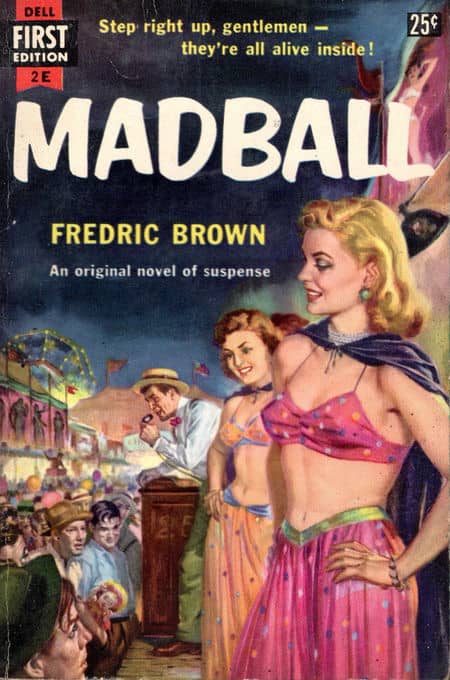 |
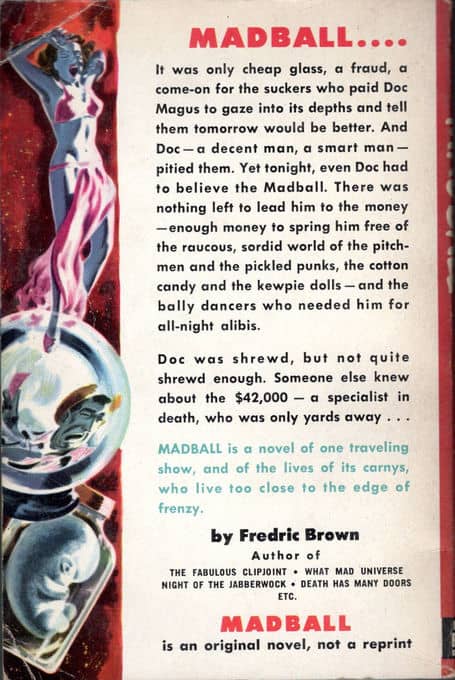 |
But the dominant note throughout this volume is one of wit and play. At his best Brown can be fairly ingenious. In his story “The Yehudi Principle” a character has invented a device that can seemingly produce just about anything. The story begins:
I am going crazy. Charlie Swan is going crazy, too. Maybe more than I am, because it was his dingbat. I mean, he made it and he knew what it was and how it worked.You see, Charlie was just kidding me when he told me it worked on the Yehudi principle, Or he thought he was.
Later in the story the main character has the device produce a story for him. The produced story starts the following way:
I am going crazy. Charlie Swan is going crazy, too. Maybe more than I am, because it was his dingbat. I mean, he made it… (!)
Trippy.
I once saw an interview with Paul Williams where he claimed that it used to be a saying to comment on something strange as “this is like something out of Philip K. Dick.” A teaser clip for the new upcoming third season of Amazon’s adaptation of Philip K. Dick’s The Man In The High Castle has the character Obergruppenführer Smith remarking, when told of the possibility of travel between worlds, that “this is like something out of Fredric Brown.”
Science Fiction Book Club edition
Fredric Brown should not be forgotten. His savvy comedy and his distinctiveness in pushing the so-called “fourth wall” between story and reader should continue to be read. Though Brown clearly is from the tradition of classic science fiction and pulps, he was utterly unique in execution and humor.
Here’s the complete Table of Contents for The Best of Fredric Brown:
“Arena” (Astounding Science Fiction, 1944)
“Imagine” (The Magazine of Fantasy and Science Fiction, 1955)
“It Didn’t Happen” (Playboy, 1963)
“Recessional” (Dude, 1960)
“Eine Kleine Nachtmusik” (The Magazine of Fantasy and Science Fiction, 1965)
“Puppet Show” (Playboy, 1962)
“Nightmare in Yellow” (Dude, 1961)
“Earthmen Bearing Gifts” (Galaxy Magazine, 1960)
“Jaycee” (The Magazine of Fantasy and Science Fiction, 1955)
“Pi in the Sky” (Thrilling Wonder Stories, 1945)
“Answer” (Angels and Spaceships, 1954)
“The Geezenstacks” (Weird Tales, 1943)
“Hall of Mirrors” (Galaxy Science Fiction, 1953)
“Knock” (Thrilling Wonder Stories, 1948)
“Rebound” (Nightmares and Geezenstacks, 1961)
“Star Mouse” (Planet Stories, 1942)
“Abominable” (Dude, 1960)
“Letter to a Phoenix” (Astounding Science Fiction, 1949)
“Not Yet the End” (Captain Future, 1941)
“Etaoin Shrdlu” (Unknown Worlds, 1942)
“Armageddon” (Unknown, 1941)
“Experiment” (Galaxy Science Fiction, 1954)
“The Short Happy Lives of Eustace Weaver” (Ellery Queen’s Mystery Magazine, 1961)
”Reconciliation” (Angels and Spaceships, 1954)
“Nothing Sirius” (Captain Future, 1944)
“Pattern” (Angels and Spaceships, 1954)
“The Yehudi Principle” (Astounding Science Fiction, 1944)
“Come and Go Mad” (Weird Tales, 1949)
“The End” (Nightmares and Geezenstacks, 1961)
Fredric Brown’s mysteries (a sampling)
Our previous coverage of Brown includes:
The Good, the Brown, and the Kornbluth by James Enge
Science Fiction Carnival, edited by Fredric Brown and Mack Reynolds
Paradox Lost
The Best of Fredric Brown
Martians, Go Home
Fredric Brown, Stanley G. Weinbaum, and Appendix N: Advanced Readings in D&D
Our previous coverage of the Classics of Science Fiction line includes (in order of publication):
Rich Playboys, Mad Scientists, and Venusian Monsters: The Best of Stanley Weinbaum by James McGlothlin
Vampires, Frozen Worlds, and Gambling With the Devil: The Best of Fritz Leiber by James McGlothlin
Space Colonies, Interstellar Fleets, and The Martian in the Attic: The Best of Frederik Pohl by James McGlothlin
A Neglected Master: The Best of Henry Kuttner by James McGlothlin
A Shaper of Myths: The Best of Cordwainer Smith by James McGlothlin
Smugglers, Alien Vampires, and Dark Dimensions: The Best of C. L. Moore by James McGlothlin
Classic SF from One of the Twentieth Century’s Great Masters: The Best of John W. Campbell by James McGlothlin
Wings, Wind, and World-Wreckers: The Best of Edmond Hamilton by Ryan Harvey
Shark Ships and Marching Morons: The Best of C. M. Kornbluth by James McGlothlin
Drawing Out What it Truly Means to be Human: The Best of Philip K. Dick by James McGlothlin
The Best of Henry Kuttner
The Best of John W. Campbell
The Best of C M Kornbluth
The Best of Philip K. Dick
The Best of Fredric Brown
The Best of Edmond Hamilton
The Best of Murray Leinster
The Best of Robert Bloch
The Best of Jack Williamson
The Best of Hal Clement
The Best of James Blish
See all of our recent Vintage Treasures here.
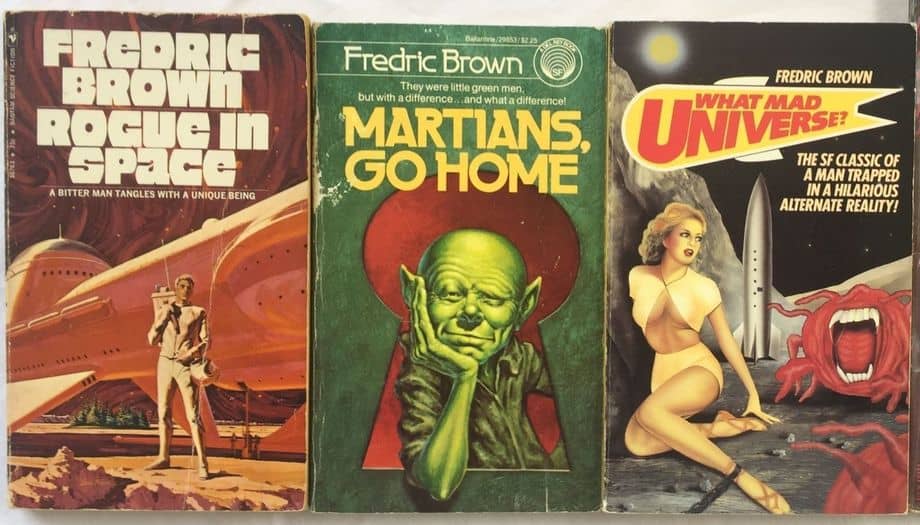
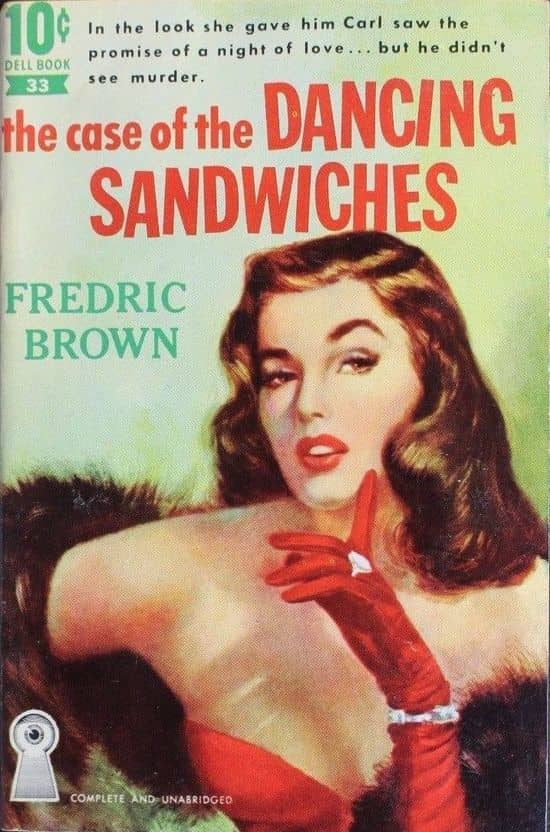
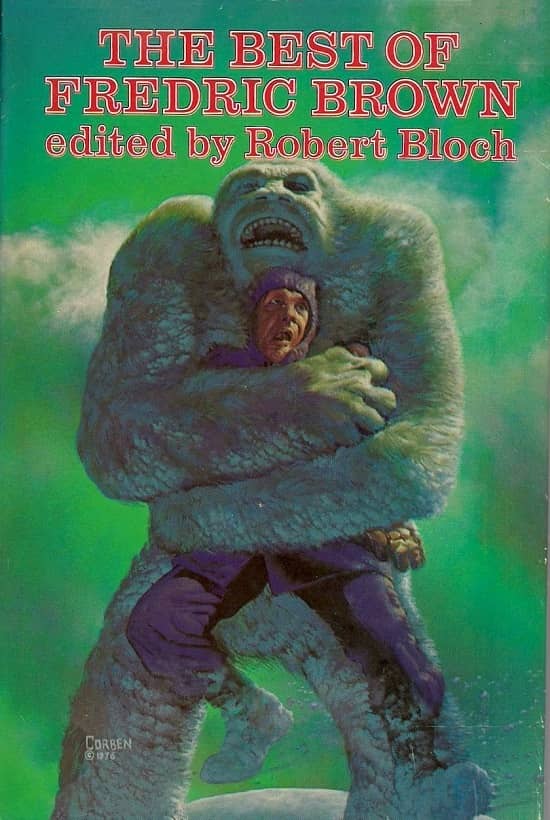
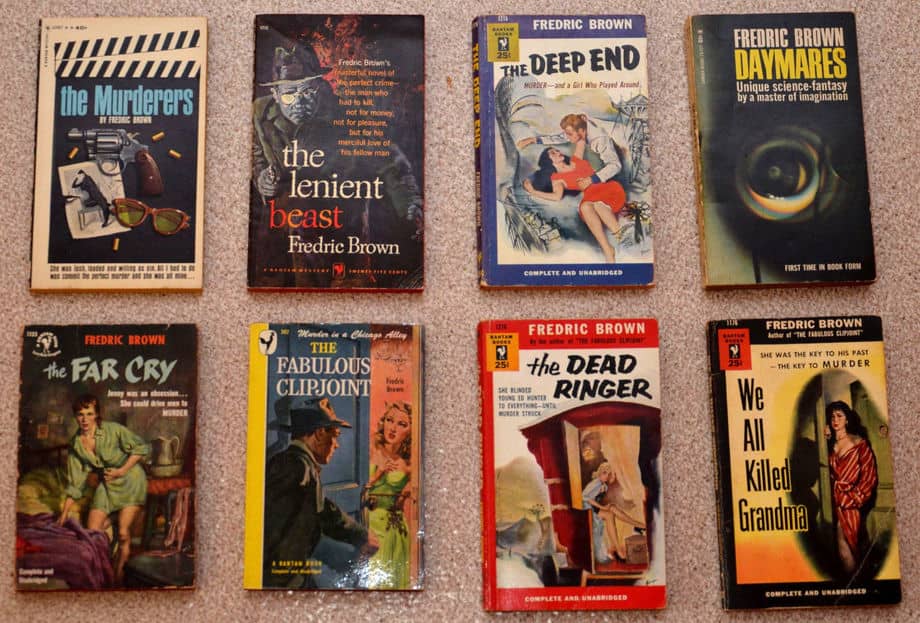
Brown is an all-time great. He indeed produced a lot of utterly weightless stuff, “stories” that were nothing more than extended – or not so extended – puns, but often the short form suited him perfectly and the joke was more than just a punchline, as in his great short-short “Answer.” (Yes – NOW these is a God!) This even applies to his novels – the short version of Martians Go Home that appeared in Astounding is superior to the somewhat padded novel (much as I still love it).
If you like Brown’s SF, you should give his noir mysteries a try. His Name Was Death is an especially good one.
“There is a God”, I should say.
I really love Fredric Brown. It’s strange that I didn’t really discover him until I was nearly 50. Before then, I’d read only a handful of stories.
My favorites are still “Arena” and “Puppet Show.”
NESFA has two huge Fredric Brown volumes out – From These Ashes has the complete short SF, and Martians and Madness has his five SF novels. Greater bargains you’ll never find,
I remember getting in the mail the issue of Astounding Science Fiction with the Martians Go Home cover by Kelly Freas. (It’s on the cover of that Del Rey paperback you show. Stunning, and hilarious. I also really like The Fabulous Clipjoint.
[…] (Black Gate): The Best of Fredric Brown (1977) was the tenth installment in Lester Del Rey’s Classic Science […]
Brown was a masterful writer, and here’s a shout out to the very entertaining What Mad Universe.
> NESFA has two huge Fredric Brown volumes out…
Top notch books! I also highly recommend the Haffner Press Fredric Brown Mystery Library. Two volumes out already, and I think more are on the way:
http://www.haffnerpress.com/author-books/fredric-brown/
> I remember getting in the mail the issue of Astounding Science Fiction with the Martians Go Home cover by Kelly Freas.
R.K,
From September 1954? 64 years ago? That’s an impressive memory! I’m a little envious. When did you start reading Astounding?
I only know Brown from his mystery pulp writing. It’s something of an acquired taste for the genre.
[…] Black Gate » Wit and Play in Classic Science Fiction: The Best of Fredric Brown. […]
I have two things to say about Fredric Brown. First, he was also an accomplished author of mysteries. In fact, I consider his, “Night of the Jabberwock” one of the best mysteries ever written. All the pieces are provided at the beginning of the novel, but it the reader would have to be particularly perspicuous to put them together before the protagonist. It also helps that the protagonist, because of the crime he is accused of, also achieves one of his life’s goals.
Second, this story was told to me by a used book-store owner who has since passed away. He said that Brown would write by getting on a grey-hound bus and think while it was traveling. When he had the nucleus of a good story Brown would get off the bus, check into a motel, and write. Then repeat. I have no idea if this story is true, but the story fits the output, and I like the story.
There are some SF authors who are not as well known as they deserve. Jack Vance’s Lyonesse trilogy is a better fantasy than Tolkien, in my opinion. Clifford Simak’s “Time is the Simplest Thing” develops a time-travel which doesn’t need parallel worlds and avoids all possibility of paradox. And John Brunner’s stream of consciousness writing in “Stand on Zanzibar” is better than Joyce.
Keep up the good fight.